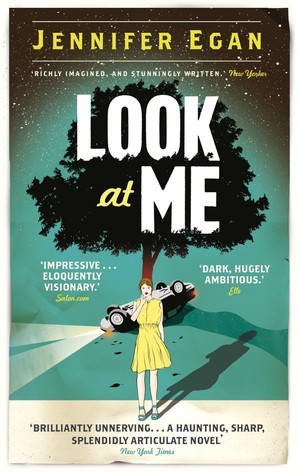What do you think?
Rate this book


514 pages, Paperback
First published January 1, 2001
Even as a child, riding home with my mother and Grace after a Saturday in Chicago, new dresses and Frango mints from Marshall Field's packed carefully in our trunk, lunch at the Walnut Room still alive in our minds—even then, when the drive between Rockford and Chicago had encompassed the entire trajectory of my known world, arriving at State Street's outer reaches, at that point practically rural, had roused in me not the lilt of home but a flat dead drone inside my head. Even then, I experienced my return to Rockford as a submersion, a forfeiture of the oxygen of life. And with every subsequent return there had been a flattening, an incursion of dreariness, as I remembered what I had come from and faced it again.
Except now. Today, a silly joy flopped at my heart as I drove past the Clocktower Hotel with its "Museum of Time," past the "Welcome to Rockford" sign, past the Courtyard Inn, the Holiday Inn, the Bombay Bicycle Club, Burger King, Country Kitchen, Red Roof Inn, Gerry's pizza, Mobil, Century 21, Merrill Lynch, Lowe's Gardening and Home Depot. I felt proud of Rockford for appearing on cue and playing its part with such conviction. I had told Irene it would be blighted, bloated, vacant, and now Rockford heaped upon us a quintessentially awful American landscape, the sort of vista that left Europeans ashen-faced: flat, hangar-sized windowless buildings; a swarm of garish plastic signs; miles of parking lot crammed with big American cars throwing jabs of sunlight off their fenders and hubcaps. It was a land without people, save for a few insect-sized humans sprinkled among the parking lots like stand-ins from an architectural scale model, humans diminished to quasi-nonexistence by the gargantuan buildings and giant midwestern sky, pale blue, dotted with tufts of cloud, vast and domineering as skies in Africa.
 come to my blog!
come to my blog!“I was peeling apart in layers. I was breaking into bits. She was coming apart at the seams … my head buzzing with a confusion of junk noise, white noise, space junk, a junkyard of noisy thought that made me long instead for a lovely, petaled silence.”
“We lie. That's what we do. You're selling me a line of bullshit and you want me to sell you a line of bullshit back so you can write a major line of bullshit and be paid for it.”